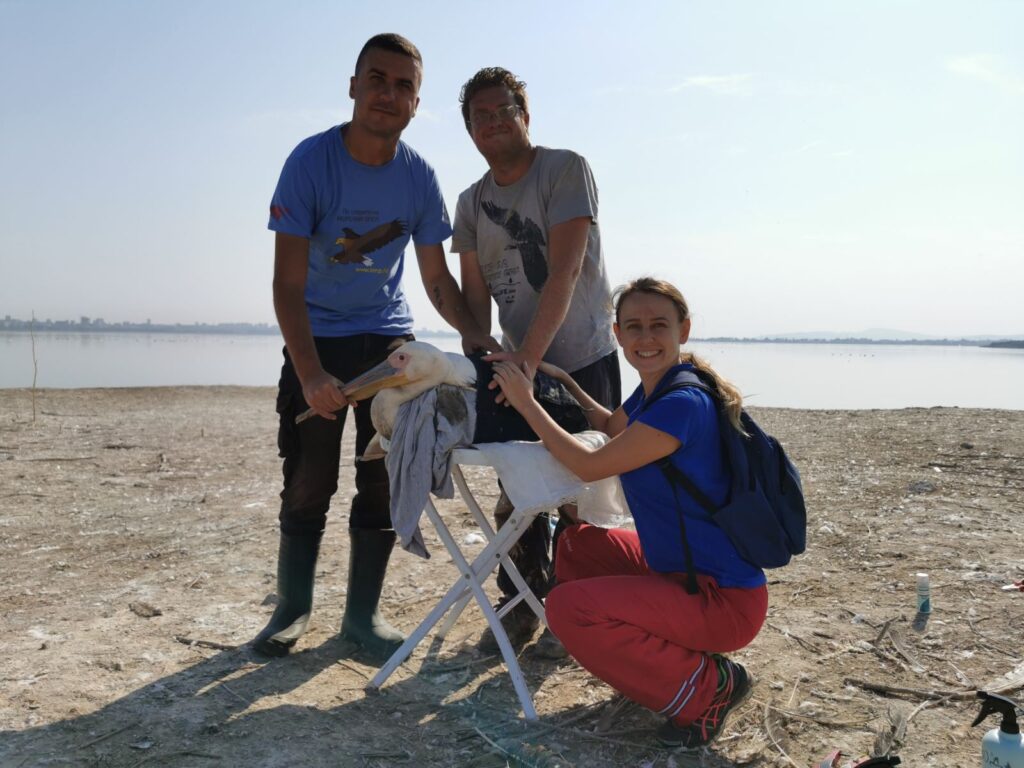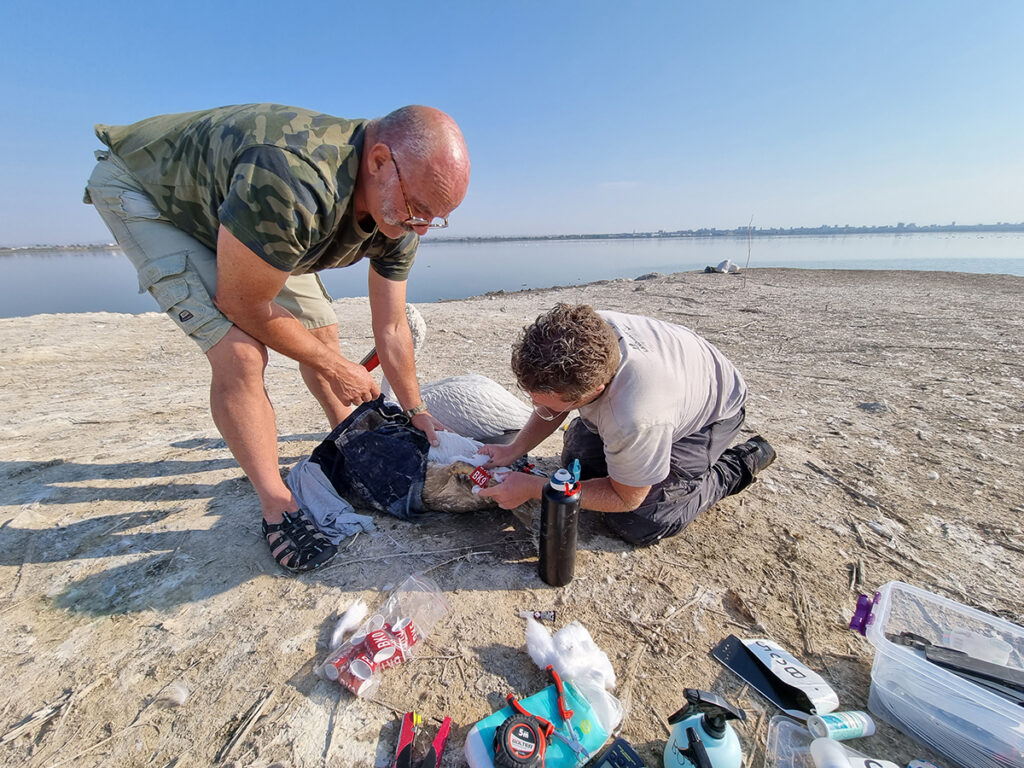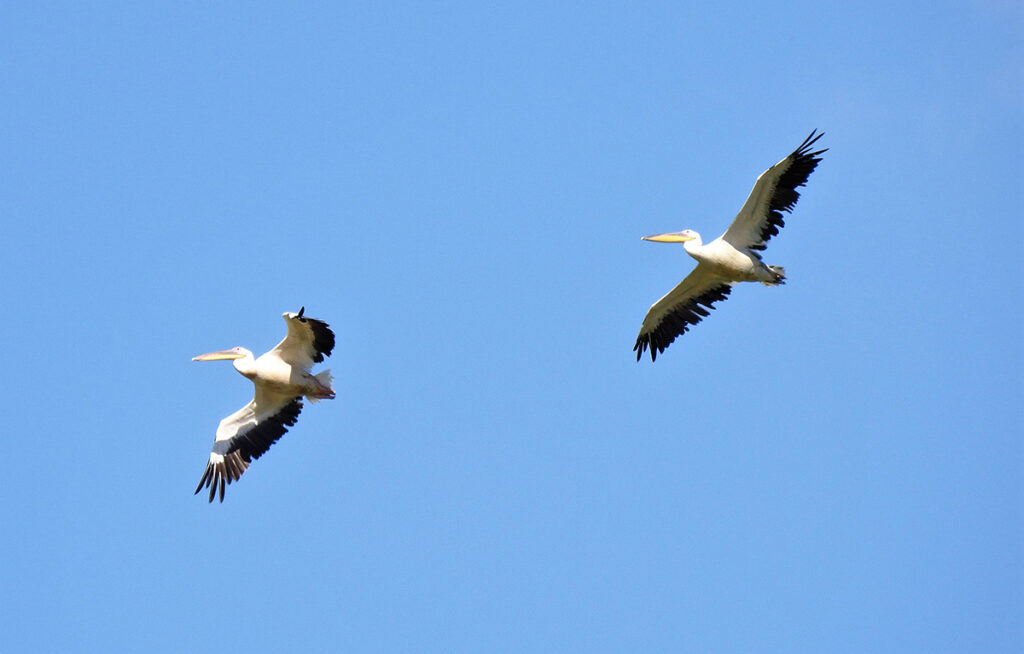After a team of the Bulgarian Society for the Protection of Birds (BSPB) marked a Dalmatian pelican in Atanasovsko Lake with a satellite transmitter in February, a Great white pelican was successfully trapped and tagged on September 15 in the area of Lake Burgas. Both activities are pilot for Bulgaria.
The device weighs 33 grams and measures 55 × 56 × 32 mm. The transmitter is placed on a special section of the bird’s wing, where it does not cause inconvenience. Tagged birds get used to transmitters very quickly and can carry out their daily activities without any problems. The team also marked the pelican with coloured and metal ring, measured its weight, wing length, beak, legs and tail to study the species. The information will be crucial for its future protection.

Immediately after the tagging, the Great white pelican was released and now the data from the transmitter shows that the bird is still in the area, spending the night and feeding in different parts of the Burgas lakes. The tagged Dalmatian pelican, Maria, is currently in the area around Bursa, Turkey.
Trapping and tagging of adult pelicans is done for the first time in Bulgaria and is a great progress in the study of these rare species. The ringing and satellite telemetry data will help us to learn more about the ecology and threats to the Great white pelican. This will help us plan and undertake future conservation measures to protect it.
The first Great white pelican with a transmitter in Bulgaria is an adult female bird and will be named Vaya in honor of the place where it was trapped.

The study of the species by satellite telemetry is carried out within the framework of the project “Wetlands Along Lower Danube – a healthy home for pelicans and people”, funded by the Whitley Fund for Nature. The activity was carried out by BSPB volunteers and experts who are part of the international project “Conservation of the Dalmatian pelican along the Black-Sea Mediterranean Flyway” (LIFE18/NAT/NL/000716) funded by the LIFE Programme of the European Union.
